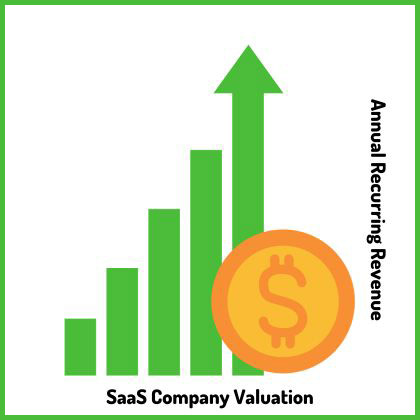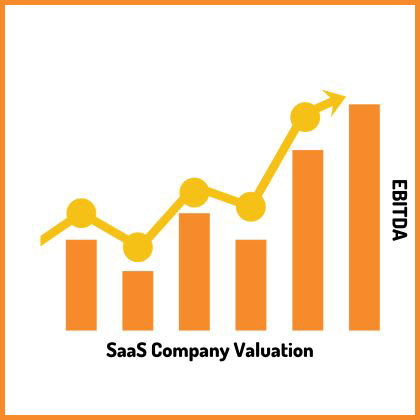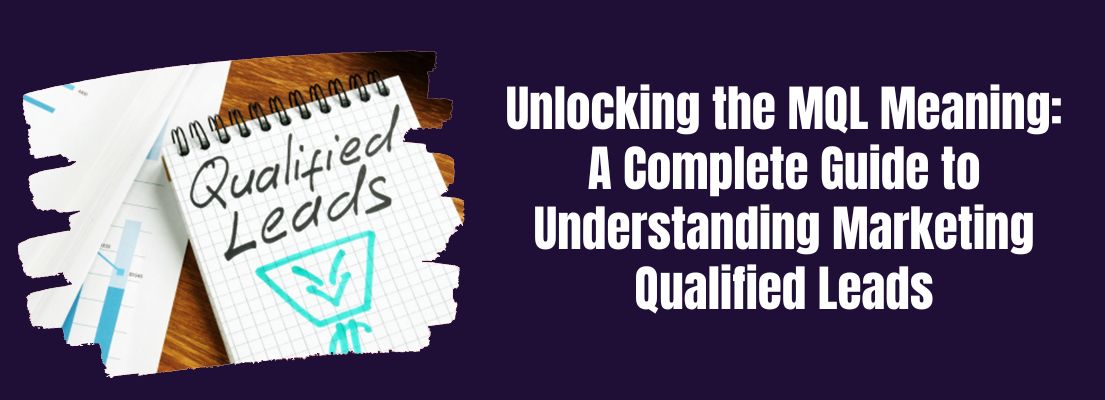Valuing a SaaS business may seem like a daunting task. However, with the right knowledge of key metrics and factors affecting valuation, it becomes a manageable and essential process for any SaaS company owner. Dive into this comprehensive guide to learn about the intricacies of valuation SaaS, the role of growth, profitability, and cash flow, and how to accurately assess a SaaS company’s worth to make informed decisions.
Short Summary
- Understanding SaaS Valuation is essential for assessing a company’s worth.
- Strategies such as pricing optimization, financial management, and market positioning can optimize the value of a business before a sale.
- Understanding key metrics like ARR, churn rate, and LTV/CAC ratio is necessary for accurately valuing a SaaS business.
Understanding SaaS Valuation
SaaS valuation is a complex process that accounts for numerous factors, such as growth, profitability, and cash flow, to determine a company’s worth. SaaS businesses can be evaluated using SaaS valuation multiples. These include the Price-to-Earnings (P/E) and Price-to-Sales (P/S) ratios. The multiple plays a pivotal role in the equation and is influenced by various factors associated with the business when trying to value a SaaS company.
It is crucial to consider the following metrics when assessing the valuation of a SaaS business:
- ARR (Annual Recurring Revenue)
- Growth rate
- Net revenue retention
- Gross margin
- Net profit margin
- Churn rate
- Market sentiment
Understanding the importance of precise SaaS valuation is essential for a substantial capital raise or company sale.
For buyers, investors, and owners alike, accurate SaaS business valuation and SaaS valuation can make all the difference in the world.

The Role of Growth in Valuation
Growth plays a significant role in SaaS valuation, as investors seek businesses that demonstrate strong and sustainable growth prospects. Founder-market fit and growth potential are the primary factors considered in the initial stages of SaaS valuation. The growth rate has a direct impact on revenue multiples, particularly when interest rates are low.
To optimize your SaaS business value before a sale, consider employing strategies such as optimizing pricing strategy, improving financial management practices, and reinforcing market positioning.
Profitability and Cash Flow
Profitability and cash flow are essential components of SaaS valuation, as they indicate a company’s ability to generate returns and maintain financial stability. Profitability plays a critical role in SaaS valuation, as it is the cash flow that ultimately determines a company’s valuation. A strong LTV:CAC ratio is vital for understanding and predicting the long-term viability of a SaaS business.
The churn rate has a considerable effect on valuation, as it affects the presumed future cash flows of a SaaS business. Decreasing the churn rate boosts a SaaS company’s recurring revenue, thus directly improving its cash flow. Minimizing churn will enable recurring revenues to expand, increasing the growth rate and diminishing the danger of value loss in the long run.
Key Metrics for SaaS Valuation

To accurately value a SaaS company, it is crucial to consider key metrics such as Annual Recurring Revenue (ARR), churn rate, and the Lifetime Value/Customer Acquisition Cost (LTV/CAC) ratio. These metrics provide insights into the company’s revenue, customer retention, and acquisition efficiency, ultimately helping in determining the company’s worth.
Investors and potential buyers can make informed decisions about the company by understanding these metrics.
Annual Recurring Revenue (ARR)
ARR is a critical metric that provides a snapshot of a SaaS company’s financial health by measuring the recurring revenue generated. It is calculated by dividing the total recurring revenue generated in a given period by the total number of customers. ARR is a key metric for SaaS valuation as it provides a comprehensive overview of the company’s financial performance and can be utilized to forecast future revenue.
To increase your company’s ARR, consider strategies such as optimizing pricing strategy, improving financial management practices, and reinforcing market positioning.
Churn Rate
Churn rate is an important metric in SaaS valuation as it measures the percentage of customers who cancel their subscriptions. A lower churn rate indicates better customer retention and product-market fit. The churn rate is determined by dividing the number of customers who have canceled their subscriptions during a given period by the total number of customers at the commencement of that period.
The churn rate is significant in SaaS valuation, as it demonstrates customer retention and product-market fit. A high churn rate can hurt the value of a SaaS business. To reduce churn rate, consider strategies such as optimizing pricing strategy, improving financial management practices, and reinforcing market positioning.
Customer Lifetime Value (LTV) and Customer Acquisition Cost (CAC)
LTV and CAC are essential metrics for evaluating the efficiency and sustainability of a SaaS company’s customer acquisition efforts and overall profitability. LTV is the average revenue generated from a customer during their subscription period, while CAC is the total marketing and sales cost associated with acquiring one additional customer. The LTV/CAC ratio is a key indicator of the efficacy and long-term viability of a SaaS company’s customer acquisition strategies and overall profitability.
To maintain a healthy LTV/CAC ratio, it is crucial to focus on customer acquisition channels, growth rate, and pricing strategy. A company can ensure sustainable growth and profitability by optimizing these factors.
Different Valuation Methods for SaaS Companies
There are different valuation methods for SaaS companies, including EBITDA-based, SDE-based, and revenue multiples. Each has its advantages and limitations depending on the company’s size and stage.
Understanding these methods can help you choose the most suitable approach for valuing your SaaS business and its business model.

EBITDA-based Valuation
EBITDA-based valuation is a technique of assessing a company’s worth based on its earnings before interest, taxes, depreciation, and amortization. This method is suitable for well-established SaaS companies with significant earnings capacity, as it concentrates on cash flow after accounting for expenses and taxes.
When calculating the EBITDA-based valuation, one must consider factors such as market conditions, competition and market saturation, and technical knowledge and intellectual property, which can all impact the valuation.
SDE-based Valuation
SDE-based valuation is particularly advantageous for SaaS companies with an annual revenue of less than $5 million. SDE stands for Seller Discretionary Earnings. It is the amount of money left to the business owner after deducting the costs of goods sold and crucial operating expenses from the gross income. Additionally, any owner’s salary/dividends can be added back to the profit number.
To calculate the SDE-based valuation, all costs of goods sold and critical operating expenses must be factored in, as well as any owner’s salary/dividends.
Revenue Multiples
Revenue multiples is a method of valuing a company that involves utilizing its revenue. This method is commonly used for private SaaS companies and provides a straightforward approach to valuation. However, this method requires consideration of operating expenses or other expenses associated with running the business.
To calculate the revenue-based valuation, one must multiply the company’s Annual Recurring Revenue by a designated multiple. Monthly recurring revenue can also be considered in this calculation. Revenue multiples are lower for businesses where the owner is integral to the company’s operations.
Factors Affecting SaaS Valuation Multiples

Several factors can affect SaaS valuation multiples, including market conditions, competition and market saturation, and technical knowledge and intellectual property. Understanding these factors can help you better assess the valuation of your SaaS business.
You can better understand the competitive landscape and the potential for market growth by understanding the market conditions.
Market Conditions
Market conditions, such as economic trends and investor sentiment, can significantly impact SaaS valuation multiples. Some factors to consider include:
- Inflation: Higher inflation can increase the cost of goods and services, potentially impacting SaaS companies’ profitability and valuation.
- Interest rates: Changes in interest rates can affect the cost of capital for SaaS companies, which can impact their valuation.
- GDP growth: Strong GDP growth can indicate a healthy economy, which may lead to increased demand for SaaS products and services and potentially higher valuation multiples.
Investors and SaaS companies need to monitor these market conditions and understand how they can impact valuation.
Investor sentiment can also have a considerable effect on SaaS valuation multiples. Optimistic investors may be inclined to pay a higher multiple for a business, while pessimistic investors may be inclined to pay a lower multiple.
Competition and Market Saturation
Competition and market saturation are of paramount importance in SaaS valuation, as they influence the growth prospects and profitability of a SaaS business. High competition can lead to reduced market share and pricing pressure, thus impacting the revenue and profitability of the company. Market saturation implies that the market may be reaching its limit of potential customers, making it more difficult for a SaaS business to acquire new customers and grow.
Small- and mid-market SaaS businesses often have limited funding, which creates a challenge in keeping up with the development efforts of more well-funded, VC-backed companies. It is particularly difficult if these businesses operate in a highly competitive niche, where the Saas business model plays a crucial role in their success.
Technical Knowledge and Intellectual Property
Technical knowledge and intellectual property play a key role in determining the value of a SaaS business. They contribute to a company’s competitive advantage and potential for innovation. In some cases, non-technical investors acquire SaaS businesses, as seen in 64% of the last 25 SaaS acquisitions at FE International.
Common Mistakes to Avoid in SaaS Valuation
When valuing a SaaS business, it is essential to avoid common mistakes such as overestimating growth potential, ignoring churn rate and customer retention, and relying on general market comparisons. You can ensure a more accurate assessment of your SaaS company’s worth by being aware of these pitfalls.
Overestimating Growth Potential
Overestimating growth potential can lead to inflated valuations that may not be sustainable in the long term. Miscalculating growth potential can result in the misappropriation of resources, ill-advised investments, and, ultimately, financial losses.
To accurately assess and project growth potential, one should utilize reliable data and monitor market trends.
Ignoring Churn Rate and Customer Retention
Ignoring churn rate and customer retention can result in an inaccurate assessment of a company’s ability to maintain and grow its customer base. Churn rate and customer retention are essential metrics to consider as they provide insight into the company’s ability to retain customers and generate revenue.
To evaluate customer churn rate and customer retention, one can track the following metrics over a given period:
- The number of customers that have left the company
- The number of customers that have stayed with the company
- The average customer lifetime value (LTV)
- The customer acquisition cost (CAC)
You can gauge the customer churn rate and customer retention of your company by monitoring these metrics.
Relying on General Market Comparisons
Relying on general market comparisons in SaaS valuation can lead to misleading SaaS company valuations. Each SaaS company has unique strengths and weaknesses that should be considered when valuing the business.
To accurately value a SaaS company, it is crucial to consider its particular metrics and expansion potential. It will ensure that the valuation is precise and takes into account the distinctive elements that contribute to the value of the SaaS business.
Tips for Increasing Your SaaS Business Value Before a Sale
If you are considering selling your SaaS business, there are several strategies you can employ to increase its value before a sale. These include optimizing pricing strategy, enhancing financial management practices, and strengthening market positioning.
Optimizing pricing strategy involves understanding the value of your product and setting prices accordingly.

Optimize Pricing Strategy
Optimizing your pricing strategy is crucial for driving revenue growth and enhancing the value of your SaaS business. To optimize pricing strategy, conduct market research to understand customer needs and preferences, as well as the competitive landscape. This information can be used to set prices that provide customers with a good value for their money while still maximizing revenue and profits.
You not only drive revenue growth but also increase the attractiveness of your SaaS business to potential buyers by aligning prices with customer value.
Enhance Financial Management Practices
Enhancing financial management practices is key to increasing investor confidence and their willingness to pay a premium for your SaaS business. It involves maintaining accurate books and clean financial reports, which are essential for obtaining accurate SaaS valuation metrics.
Additionally, improving these practices serves to demonstrate to potential buyers that your SaaS business is not only well-managed but also rests on a strong financial foundation.
Strengthen Market Positioning
Focusing on growth potential, targeted marketing, and expansion into new markets can help strengthen your market positioning and increase your SaaS business’s value before a sale. Evaluating the commercial viability of the SaaS business and protecting intellectual property are essential steps in creating competitive barriers and influencing the sale price.
You can present a more attractive and valuable business to potential buyers, ultimately leading to a more successful sale by strengthening your market positioning.
Summary
In conclusion, accurately valuing a SaaS business involves understanding key metrics and factors, such as growth, profitability, and cash flow, as well as employing appropriate valuation methods and avoiding common mistakes. You can increase the value of your SaaS business before a sale by optimizing pricing strategy, enhancing financial management practices, and strengthening market positioning. Apply these insights to make informed decisions and ensure the success of your SaaS business valuation.
Frequently Asked Questions
How do you calculate valuation in SaaS?
Calculating valuation for a SaaS company typically involves examining key performance metrics such as revenue, EBITDA, ARR, NRR, and gross margin, and applying multiples or an equation to these factors to reach a final figure.
The SaaS Rule of 40 also provides a useful guideline to make sure the business is growing at a healthy rate.
What is the 40 rule of SaaS?
The Rule of 40 is a popularized measure of growth among SaaS investors, requiring the combined total of a company’s revenue growth rate and profit margin to equal or exceed 40%. Achieving this mark indicates a sustainable level of profitability while falling below 40% can lead to cash flow or liquidity issues.
Why are SaaS valuations so high?
SaaS companies are enjoying higher valuations due to their fast growth and recurring revenue. Recurring revenue is earned by charging monthly subscription/recurring fees, resulting in more predictable earnings.
This has created a strong market demand for SaaS products.
What are some key metrics to consider when valuing a SaaS business?
ARR, churn rate, and LTV/CAC ratio are key metrics to consider when valuing a SaaS business.





